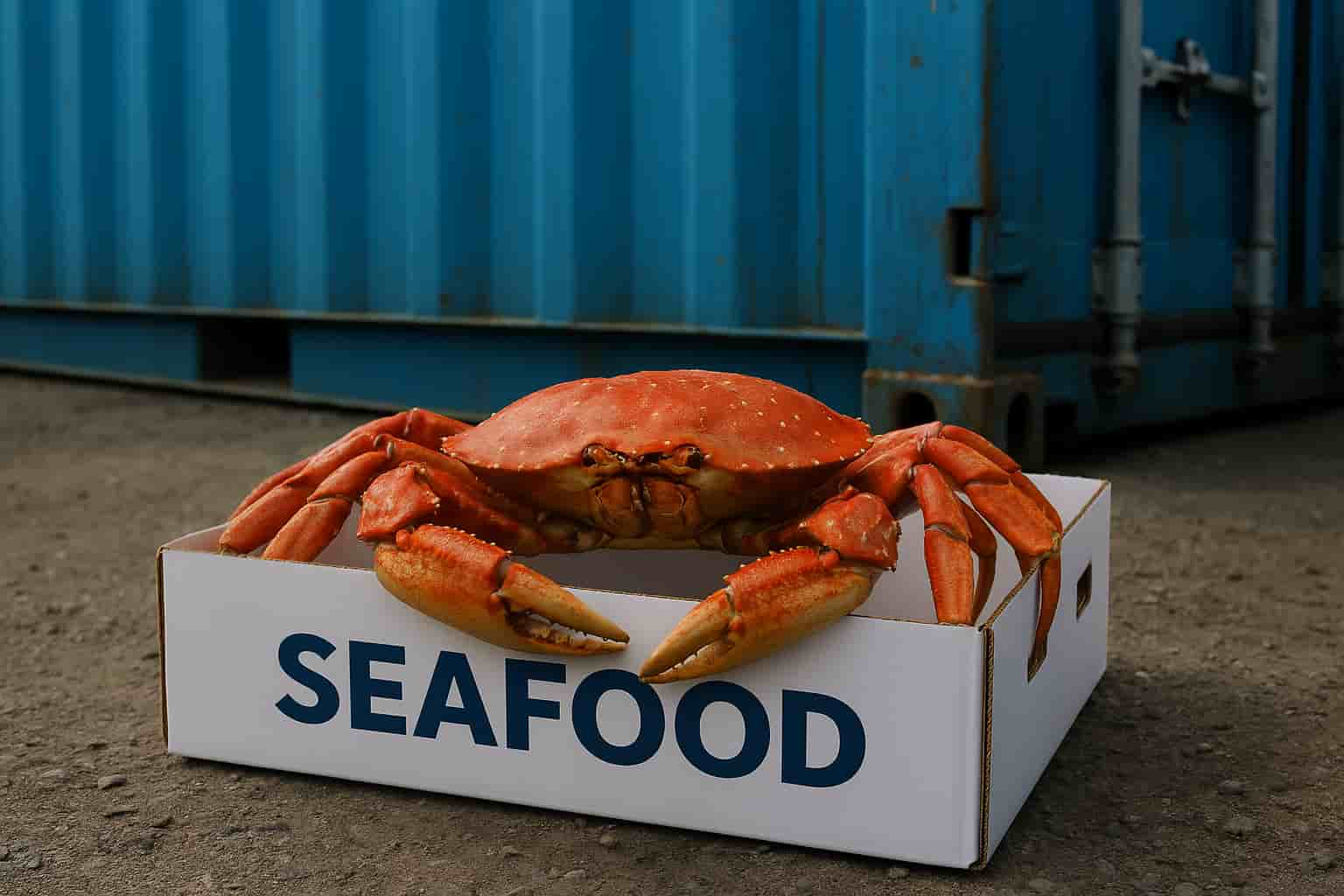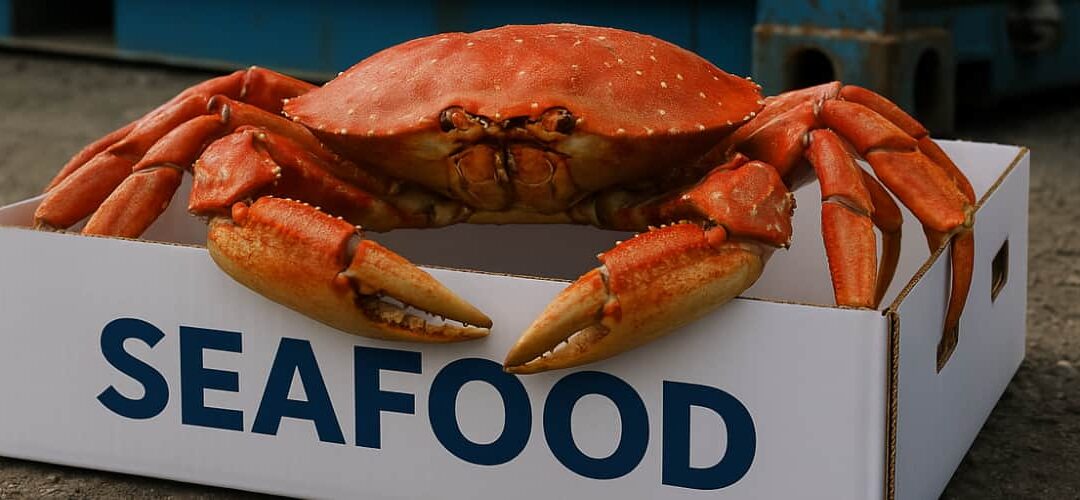Behind every premium seafood dish served in top restaurants lies an intricate, technical process ensuring that the product is safe, flavorful, and meets stringent international standards. In today’s globalized market, where consumers expect nothing but the best, seafood quality control is not just a regulatory necessity; it’s the linchpin of brand reputation and market success. This article delves deeply into the technical aspects of crab inspection, demystifying the rigorous practices that guarantee high standards in seafood quality control.
Whether you’re a quality assurance professional, a seafood processor, or simply a connoisseur of fine crab, you’ll find valuable insights into every critical step of the la inspección de calidad process—from sampling protocols to organoleptic evaluations.
The Importance of Seafood Quality Control System
Seafood products, especially crab, require meticulous handling because their quality directly influences consumer safety and satisfaction. The overarching aim of seafood quality control is to mitigate risks—be they health hazards, inconsistencies in product specifications, or even potential fraud. Adhering to global guidelines such as those outlined in the FAO Codex (Section 15B) and the CAC/RCP 28 standards ensures that every step, from harvesting to final dispatch, maintains an uncompromising standard.
A robust seafood quality control system addresses multiple facets:
- Food Safety: Prevents contamination and ensures that the product is safe for consumption.
- Product Consistency: Guarantees that every shipment delivers the same high-quality experience.
- Regulatory Compliance: Aligns operations with international standards, facilitating smoother market access.
- Customer Trust: Builds confidence in the brand through transparency and reliable inspection processes.
Detailed Seafood Quality Control Inspection Process for Crab
1. Sampling and Subsampling for Sea Food
Why It’s Important:
Sampling is the foundation of any seafood quality control inspection process. It involves selecting a representative portion of the entire batch to accurately gauge overall quality. This is particularly crucial for highly perishable products like crab where quality can vary significantly.
Technical Considerations:
- Designing a Sampling Plan: The sampling plan should detail the number of samples, their locations, and the frequency of sampling. This helps in achieving statistically significant results.
- Subsampling Procedures: Once the initial sample is collected, subsamples are taken. This step minimizes the risk of overlooking localized defects and ensures that multiple aspects of the product are evaluated.
2. Assessing Packaging Conditions
Why It’s Critical:
The packaging of crab products is more than just a container—it protects the product, preserves its freshness, and maintains its appearance. Damaged or subpar packaging can compromise the product even before it reaches the consumer.
Inspection Elements:
- Inner and Outer Packaging: Inspectors must evaluate the integrity of both the inner and outer packaging. Look for signs of physical damage, excessive frosting, clumping, or discolored protective glazing.
- Visual Documentation: High-resolution images are taken to capture the condition of the packaging. This documentation serves as proof of compliance and can be crucial in addressing any disputes or claims.
3. Verifying Labelling Details
Importance of Accurate Labelling:
Clear and accurate labelling ensures traceability and provides essential product information. It reinforces quality control by making it easy to verify that the product meets all regulatory and consumer standards.
What to Check:
- Cumplimiento de Normativas: Labels should include the product’s origin, storage instructions, and any pertinent expiry or best-before dates.
- Legibility and Accuracy: Any errors or ambiguities in the labels can lead to misinterpretations. Inspectors need to ensure that all information is correct and easily readable.
4. Monitoring Seafood Core Product Temperatures
Temperature: A Critical Quality Parameter
Proper temperature control is vital for maintaining the freshness and safety of crab products. Deviations in temperature can lead to bacterial growth and spoilage, directly impacting food safety.
Técnicas de Inspección:
- Temperature Measurement: Use calibrated thermometers to record the core temperatures of the product throughout the inspection. Data should be collected at multiple stages, from storage to transport.
- Equipment Calibration: Regular calibration of temperature monitoring instruments is necessary to ensure reliability. Any temperature discrepancies must be noted and rectified immediately.
5. Ensuring Accurate Gross and Net Weight Measurements
Weight Verification as Quality Assurance:
Correct weight measurements are essential for ensuring that the product meets the expected specifications. Discrepancies can indicate issues in the production or packaging processes.
Measurement Protocols:
- Gross Weight: This includes the total weight of the package, along with the protective packaging.
- Net Weight: This is the weight of the crab product itself, excluding packaging materials. Both measurements should be precisely recorded and compared against standardized benchmarks.
- Standardized Procedures: Employ consistent weighing methods using properly calibrated scales to reduce measurement errors.
6. Glaze Percentage Analysis
The Role of Glazing for crabs:
Glazing serves as a protective barrier, preserving the product during freezing and storage. However, the amount of glazing must be carefully controlled—excessive glazing can obscure true product quality.
Analysis Approach:
- Visual and Measured Evaluation: Inspectors must evaluate whether the protective glazing stays within the acceptable limits. This is done through both visual inspection and precise quantification.
- Impact on Quality: Proper glazing ensures product preservation without masking defects. Any deviation from the norm requires further examination and documentation.
7. Cross-Sectional Inspection for Internal Crab Quality
Why It Matters:
A cross-sectional examination is indispensable for verifying the internal quality of the crab product. This process confirms that the meat is evenly distributed and of the appropriate quality.
Technical Steps:
- Cutting Cross-Sections: Obtain cross-sectional samples from representative parts of the product.
- Meat Infill Verification: Evaluate the distribution and density of the crab meat. It is critical to ensure that the internal structure meets the required meat-to-shell ratio.
- Photographic Evidence: Capture clear images of the cross-sections to aid in quality assessment and documentation.
8. Evaluating Crab Appearance and Surface Condition
Aesthetic Quality as an Indicator:
The visual appearance of crab products serves as a first impression of quality. Inspecting the external attributes is essential for detecting any signs of physical imperfections.
Inspection Points:
- Workmanship Assessment: Look for irregularities such as scarring, mottling, or signs of marine growth.
- Condition of the Shell: Any visible damage or discoloration can be a signal of underlying issues. Detailed documentation of these findings is crucial.
9. Breakage Status Evaluation
Why Breakage is Key to Quality:
The integrity of crab clusters affects both the product’s marketability and its classification. Breakage can occur during handling, processing, or packaging and needs to be accurately categorized.
Evaluation Process:
- Classifying Breakage:Separate observations into fully intact clusters, partially broken yet usable pieces, and completely unusable fragments.
- Impact Analysis:Understanding the extent of breakage helps in adjusting production processes and maintaining quality standards.
- Documentation: Systematically record and photograph instances of breakage, supporting the technical evaluation.
10. Organoleptic Inspection
The Sensory Dimension of Quality:
Organoleptic inspection evaluates the sensory attributes of the crab product—those critical aspects that influence consumer acceptance, such as odor, flavor, texture, and color.
Inspection Details:
- Sensory Evaluation: Trained personnel assess the product to determine if it meets the desirable sensory profile.
- Standardized Methods: Use a controlled environment and standardized procedures to minimize subjectivity in the evaluation.
- Detailed Reporting: Document the findings thoroughly, combining written observations with photographic evidence to support the organoleptic profile.

Alignment with International Standards
To ensure global market compatibility and consumer safety, the entire inspection process must align with international guidelines such as the FAO Codex and CAC/RCP 28. These standards provide benchmarks for food safety and quality, ensuring that every inspected product adheres to best practices in hygienic handling and processing. Regular updates to the seafood quality control inspection protocols are necessary to incorporate advances in technology and evolving regulatory requirements.
Conclusión
A comprehensive and technically detailed inspection process for crab products is indispensable in the seafood industry. From the initial sampling and subsampling, through rigorous packaging and temperature assessments, to the final organoleptic evaluation, every step is designed to ensure that the product meets stringent quality and safety standards. By meticulously following these procedures, seafood processors and quality control professionals can significantly mitigate risks, deliver a consistent and superior product to the market, and adhere to internationally recognized standards. In a world where consumer expectations are at an all-time high, such rigorous food quality control not only ensures safety but also enhances brand reputation and customer satisfaction.
Implementing these detailed seafood quality control measures is critical for staying competitive in the fast-paced seafood market. This technical guide, grounded in internationally accepted practices, provides you with the knowledge and tools required to achieve and maintain excellence in crab quality inspection. Embrace these practices to ensure your products are not just safe, but also a benchmark of quality and integrity in the seafood industry.

